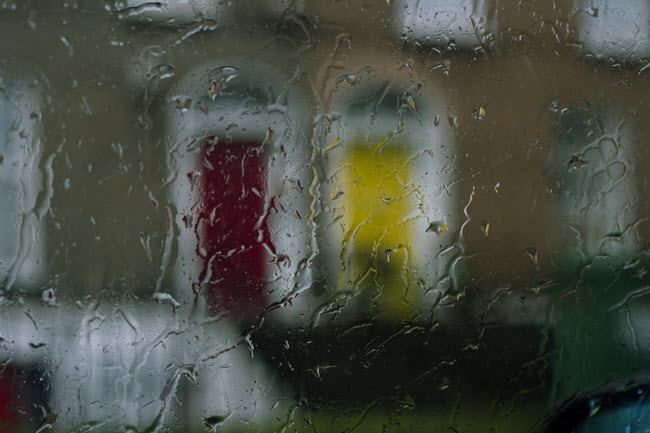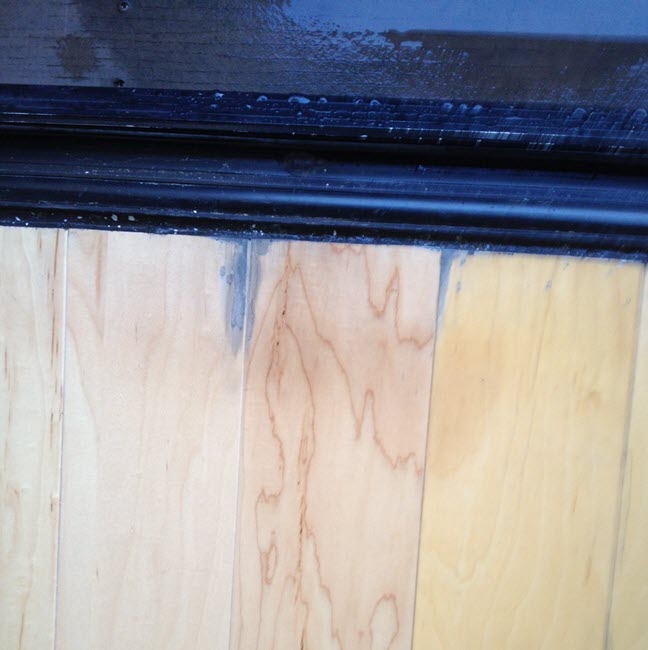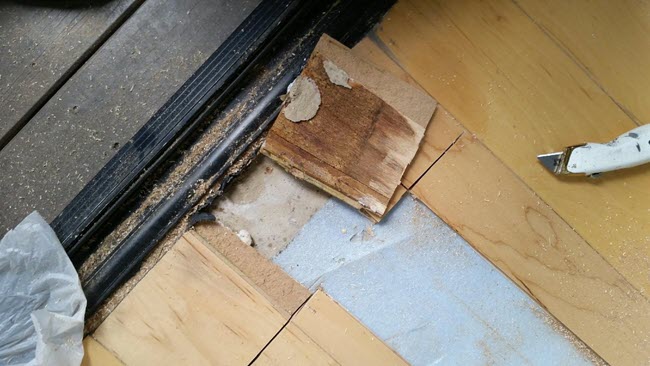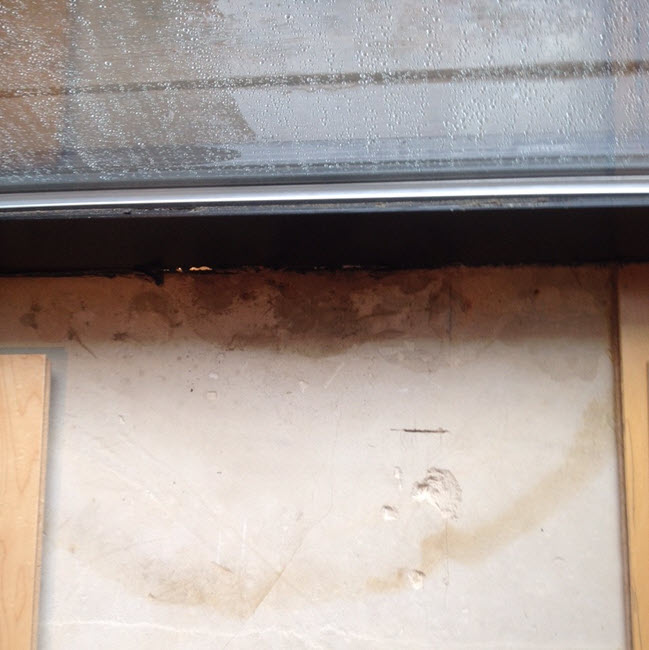 Tiling over a water problem will not make the problem disappear. Rather, you need to find the source of the water leak before installing any floor surface, including tile.
Tiling over a water problem will not make the problem disappear. Rather, you need to find the source of the water leak before installing any floor surface, including tile.
As Mark Heinlein CTI #1112 and National Tile Contractors Association (NTCA) Training Director says,
"You should not be seeing any water coming in through or under the door sill or into the concrete... The problem of water entering the structure needs to be resolved before installing any floor surface."
Here's the specific situation his comment refers.
Water Leak Issues
This specific situation consists of an engineered hardwood floor that floats over a concrete slab on a second floor. In other words, it's above grade.
Since the homeowner moved in 7 years ago, he has experienced water leak issues every one to two years usually in the summer, and no one seems able to fix it. Explanations include:
- The water is getting in through the door
- It's coming in from the flashing outside
- No, rather it's from the slab below as water vapor
- It has to be that the aluminum slider is leaking/sweating, and that sunlight could also be making it worse.
Interestingly, the homeowner has never actually seen any water, even when the slab was exposed for several months to frequent heavy DC thunderstorms.
He has only once seen a small area of wet concrete and the discolored and cupping wood, which scrapes against the door as you can see in the image below.

Let's Try Outdoor-Rated Porcelain to Solve the Issues!
Since the homeowner is tired of warped wood, he hopes to identify a solution that will work regardless of the moisture source. He proposes cutting a square in front of the door to create a 1'x2' or 2'x4' entryway where he would install outdoor rated porcelain tile.
The tiles would be surrounded by floor edge profile strips, and the existing wood beyond that.
At the threshold, he would use lots of caulking, and he would plan to seal the concrete unless that would make any potential water vapor migrate further into the unit and damage the hardwood.
Overall, he would rather have tile issues than wood issues so he doesn't have to replace the entire wood in that room.
By the way, a professional commented about the photos:
"Ugh, I just looked at your photos: fiber board in center of a maple, no transition, no continuous bead of sealer underneath and across the two materials (aluminum threshold/hardhood)."

Find the Water Leak Source Before Tiling
How do you think this homeowner should proceed?
Mark Heinlein believes the problem could be with the door itself, the installation of the door, the installation of the deck and its framing, the installation of flashing at the exposed edge of the slab, or any combination of these things.
Is the Door Properly Installed?
Mark encountered a similar situation (i.e., the subfloor kept getting saturated every time it rained and the finish floor could not be installed), where the problem had to do with a general contractor improperly installing a very expensive door unit.
The contractor figured that because of his experience installing hundreds of doors, he didn't need to follow the manufacturer instructions. After numerous attempts to add more sealant, removing and replacing the door at least two times, a manufacturer rep came onsite to monitor the installation a third time and, using the printed instructions for the door, directed the contractor on its installation.
Problem solved. The door never leaked again.
>> See Do You Ignore Grout Manufacturer Directions?

A Simple Test to Try
If you aren't sure that the door has been properly installed, Mark suggests a simple test to try.
- Spray the door and sill with a hose or sprinkle water on it with a garden watering can to mimic rain.
- Does water come in?
- Does it come in under/through the sill?
- Does it come in through the door sweep?
If you see water, then there's a problem with the door or sill and/or its installation.
Again, no water should come in under the sill or through the sweep or other door component.
Don't hesitate to contact the manufacturer of the door unit and obtain the original installation instructions to try to determine whether the door was properly installed.
You may have to have the door removed, examined, and reinstalled using the instructions to make this determination.
Fix the Problem First
The water intrusion may be originating with the flashing (or lack of flashing) and/or the deck installation and/or the installation of the sill and door. Water may indeed be gathering in the leading edge of the slab under the deck, saturating and wicking into the top corner of the slab and up under the sill and into the subfloor area.
Regardless, any issue involving water needs to be properly examined and resolved. That may require hiring a recognized, licensed, experienced, and trusted general contractor who can provide a proper inspection and strategy for correction.
Be prepared to have this professional remove some deck boards to see what’s going on there.
Then, Decide on Tile as a Floor Finish
Once you have the source of the water leak problem fixed, then you can decide whether to add tile or another the floor finish.
You don’t want to have water intrusion into your structure even if you decide on tiling. If left unresolved, water's persistent presence may likely create other, as yet unforeseen problems.
And, if you intend indeed to tile your floor, we strongly recommend hiring a Certified Tile Installer.
Have You Had to Determine a Water Leak Source Before Tiling?
Have you had to deal with water issues? How did you trouble shoot your situation? What wound up being the issue?
And, how did you remediate the situation once you located the source of the the water leak so you could properly tile the space?
Thanks for reading.

